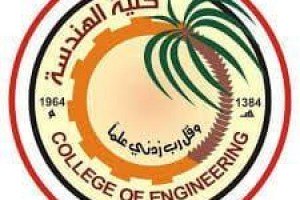
The doctoral thesis of the student Ahmed Fadhel Kadhim was discussed at the University of Basra, College of Engineering, Department of Civil Engineering, entitled Performance of self-compacting concrete beams using recycled aggregate under torsion
The experimental work included examining twenty-six specimens of concrete beams that were cast and tested under torsional moments All the beams have a rectangular cross-section with dimensions of (200x250) mm2 and 1500 mm long and can be divided into two types of groups, the first group was fourteen of solid, while those in the second were with rectangular twelve with hollow cores of dimensions ( 60 X 110 mm ) within each group the parameters considered include the RCA content, ( 0,25,50 and 75 % ), The amount of longitudinal reinforcement and The number of stirrups, and divided into three groups, Beams without bars and stirrups, Beams with longitudinal bars only, and Beams with conventional reinforcement including bars and stirrups. The results revealed that for all groups, no significant difference in behavior was identified in the RCA-containing beams at the cracking stage, Where All the beams exhibited similar linear torque-rotation behavior. At the same time, RCA-containing beams show a decrease in cracking torque depending on the substitution ratio of RCA.
For plain beams without reinforcement, the beams failed suddenly and separated into two parts as the first cracks developed, The increase in the beam’s resistance after the initial cracking comes from the presence of longitudinal reinforcing steel bars, which led to an increase in the concrete’s bonding during loading and prevented the catastrophic collapse when the concrete reached the ultimate tensile strength. While The beams reinforced with transverse reinforcement demonstrated increment in both first cracking torque and ultimate torsional strength,
The results for the angle of twist indicate that the damage to concrete depends on the percentage of replacement, thereby increasing with higher replacement percentages. An increase in the twist immediately after cracking caused a more significant effect on the beam because the energy that gets released ends with a more brittle crushing and increasing the reinforcement content in the section will increase the value of the angle of twist of the beam clearly and result in an increase in stiffness.
The angle of twist for solid beams (S) is lower than that in (H) beams due to the hollow section reducing the rigidity of beams and leading to an increase in twist angle at ultimate torque.
Finite element models by using available computer program (ANSYS) have been performed to study the torsional behavior of tested beams analytically. The results obtained from finite element analysis show a good agreement with experimental results .
.jpg)
.jpg)





